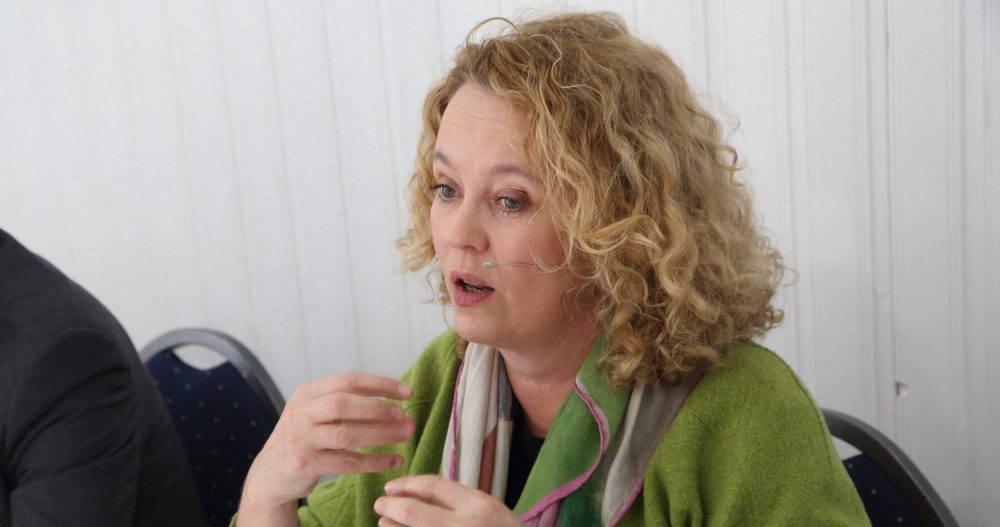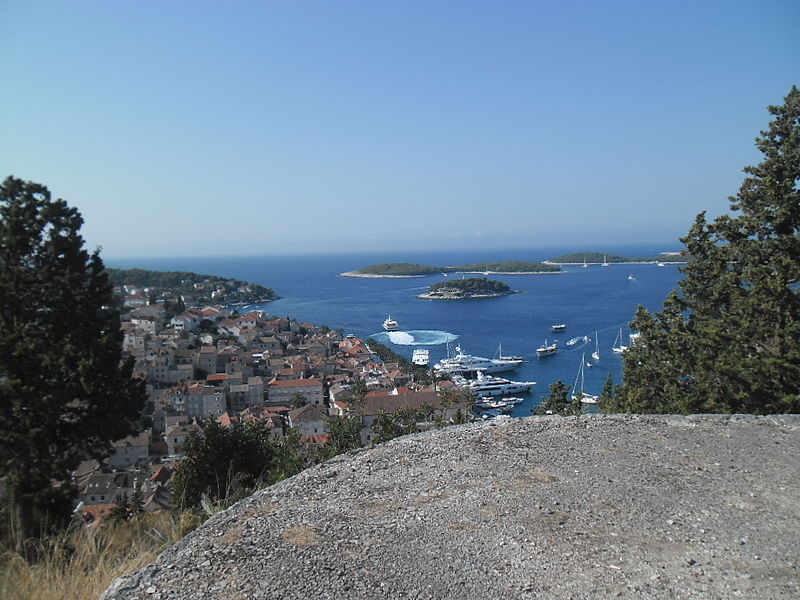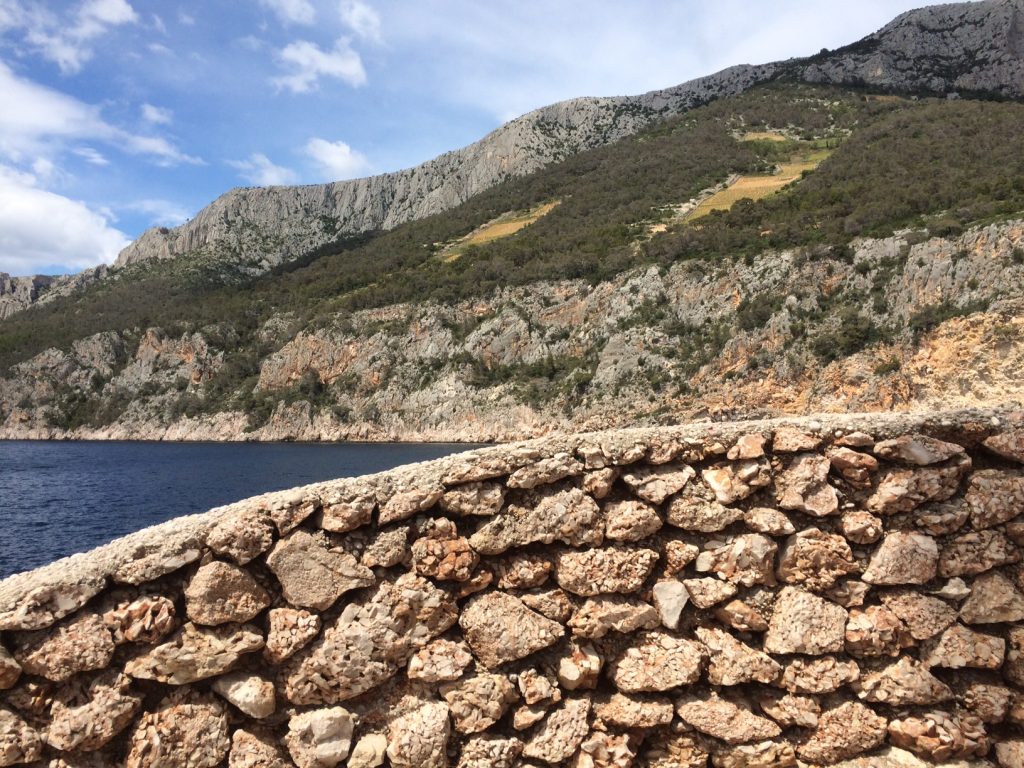Trendsetter: Jo Ahearne MW, Winemaker
Reading Time: [est_time] Jo Ahearne is an academically trained winemaker and a Master of Wine. She is currently producing Croatian wine under her namesake winery on the island of Hvar in South Dalmatia. In this interview,

Reading Time: 7 minutes
Jo Ahearne is an academically trained winemaker and a Master of Wine. She is currently producing Croatian wine under her namesake winery on the island of Hvar in South Dalmatia. In this interview, she sheds some light on the Croatian wine industry and what it’s like to make wine in Croatia.
You can find Jo Ahearne wines at wineandmore.com
JO AHEARNE, AN EDUCATED GUEST
- Jo, thank you for taking the time to do this interview. Let’s start off by getting to know you, as a wine lover, a little better. Do you have an epiphany wine?
Wine wasn’t a huge part of my life growing up. We [my family] did have wine occasionally, but it was only as I got a bit older, also when wine became more accessible in the UK with supermarkets selling it, that it was more of a thing. I suppose my ‘come to Jesus’ moment was during a holiday in France with my parents, sister, aunt, uncle, and my cousins. My dad and uncle decided to treat themselves to a half-bottle of Pommard, but since they were surrounded by seven women who were having none of that ‘not sharing’ lark, we all ended up with a sip each!
——————————————
“It [Plavac Mali] is a grape that you can get that Nebbiolo-esque perfume and refined tannin backbone, but make it another way and it will have the burly Amarone or Barossa Valley richness.”
——————————————
- A Pommard sounds like a fine way to start the journey. How has your preference in wine evolved over time?
I think in wine, like in many areas in life, there can sometimes be an obsession with the ‘next new thing’, and we can forget what made us love something in the first place. But I do think your palate is your palate. I’m a bit of an acid freak with white wines, and I don’t think that has changed. But with red, I was more of a Bordeaux girl to start, and that has definitely changed.
I remember the first ‘serious’ bottle of Australian wine I bought when I started working at Oddbins: it was a Charles Melton’s Shiraz. It cost £8; but considering I was earning £2.50 an hour, it was a huge purchase for me. The ripeness of the fruit and the seductive tannins were a revelation for me. The weird thing was that years later, Charlie gave me my first vintage job, which started me on the path to becoming a winemaker. 10 years in Australia made my palate more New Worldy.
Coming back to Europe, I worked a lot in Italy and enjoyed bolder southern reds but really fell in love with Piedmont and Nebbiolo; I started to ignore those lovely bold Australian flavors. This was what made me want to make Plavac Mali. It is a grape that you can get that Nebbiolo-esque perfume and refined tannin backbone, but make it another way and it will have the burly Amarone or Barossa Valley richness. So I’ve started to embrace the richness once more.
- What makes Hvar so special?
Ah! I could go on forever. When I decided that I’d make my own wine in Croatia, I looked at what was considered the ‘grand cru’ sites, and the south side of Hvar was one of them. In a country that is ridiculously beautiful, Hvar is even more beautiful. When I travel to another region, I think about how lovely it is, and then I come back ‘home’ and realize that Hvar is on another level.

A view of Hvar, Croatia. © August Dominus, CC BY-SA 4.0
- We agree. Hvar is a stunning-looking place with great food, great wine, and fantastic people. What are the challenges of being a foreigner making wine in Croatia?
I think they are the same challenges that you would have anywhere else. As a Londoner, I am always going to be an outsider making wine in Croatia. The Croatian language is hard, but so many people speak great English here. The main challenge is probably just finding out who sells what, like the capsules, bottles, and corks. I still can’t find someone who is able to print the cartons I want for my wine. I know it sounds daft, but I can’t find a likable bottle that is the same for the standard, magnum, and jeroboam formats. Another challenge is finding growers who understand yield and quality. I tend to let the vineyards do the quality control for me; good sites can control the excess vegetation and excess yield naturally.
- Tell us about the Dalmatian grape varieties, especially the ones you work with.
I started with Plavac Mali, which is related to Zinfandel (known in Croatia as Crljenak Kaštelanski and Tribidrag) and has that same part-raisin flavor profile. This comes not from a desire for extended ‘hang time’ but because it ripens unevenly. So a proportion of the fruit has to be raisined for the rest of the berries to have a chance at ripening. Vineyard selection is paramount because there are some places, even on the south side of Hvar, where the tannins never get ripe and the acidity is too low and pH too high. However, if you get it right, Plavac Mali can produce such fine tannins that imbue even the biggest wine with elegance.
Then I found the Darnekuša for my rosé, which is the opposite of Plavac Mali. It never ripens to more than about 11.5% potential alcohol and has very little color. But it has concentration, structure, and fantastic acidity.
I found some great Pošip this vintage. I think it’s akin to Pinot Bianco with a twist of Viognier. And then I work with Bogdanuša and Kuć as well, which can be quite neutral.
——————————————
“Wine production isn’t cheap here, so the prices of Croatian wine come as a surprise to a lot of people. When I tell my friends in Spain how much Plavac Mali and Darnekuša cost, they get a heart attack.”
——————————————

A vineyard on the island of Hvar.
- We’re big fans of both your Plavac Mali and Darnekuša. Please share with us more about your wines.
I choose the Plavac Mali based on vineyards and scientific analyses. The fruit has to have concentration and freshness to start. Then if the tannins are ripe and the pH is low enough, I will buy the fruit. I have a cutoff point of pH 3.7 in the vineyard, and many of the parcels I buy have much lower pH than that. I’ve seen fruit that has another month till it’s ripe and already at pH 3.8. Making wine from grapes with a pH over four is not fun.
For Pošip, I pick at three different sugar levels to get the flavors of lime and lemon, then peach and melon, and finally tropical guava and pineapple.
For Bogdanuša and Kuć, I ferment them on skins to get more flavors from these neutral varieties and also some refreshing phenolics. It’s mostly about texture for me; so for the whites, I do a lot of bâttonage. I spend hours removing stalks and seeds from the red wines to get rid of green tannins. Everything is fermented in open-tops. Pushing the cap down is done by hand for gentle extraction and to make sure the wine is getting enough oxygen.

Jo Ahearne Rosina, a rosé made from Croatia’s indigenous variety called Darnekuša.
- Are there any Croatian wines that have really caught your eye?
The wine that inspired me to make my own Plavac Mali was Miloš Stagnum, with its perfume and refined tannic tension. The Tomić Caplar is a perfect combination of international and indigenous varieties. I adore La Sin, the Lasina from Bibich, which is known as the ‘Dalmatian Pinot Noir’ because of its amazing silky texture. Vina Cattunar from Istria is doing some interesting things with soil types; its Malvazija, which I tasted at the Vinart Grand Tasting in Zagreb, had this amazing white pepper spice and fabulous texture. There are some great Sauvignon Blancs coming out of Slavonia. But to be honest, I need to spend a few months traveling around and visiting more wineries.
- What are the cultural obstacles you face in Dalmatia?
No more than in any other places where you are an outsider. The Dalmatians are famous for being quite stubborn, but so can I!
——————————————
“The notion that Eastern Europe equals cheap wine is a hard one to work against.”
——————————————
- Is Croatian wine ready for the international stage? What are the obstacles that the Croatian wine industry might face moving forward?
There is a thirst – excuse the pun – for exploring different regions and grape varieties, and that’s more widespread than just among us wine geeks. Five years ago, people were less adventurous. This plays nicely into the hands of the Croatian wine industry with its wealth of indigenous varieties.
Wine production isn’t cheap here, so the prices of Croatian wine come as a surprise to a lot of people. When I tell my friends in Spain how much Plavac Mali and Darnekuša cost, they get a heart attack. The notion that Eastern Europe equals cheap wine is a hard one to work against. There are no large vineyard holdings to make ‘entry point’ wine; with the demise of the co-operative system, there isn’t the focus on that end of the market as you’d find in France, Spain, and Italy.
For me, one of the biggest obstacles is that the majority of tourists who visit Croatia sample wine in konobas. The quality of the wine in those places is varied, to say the least. It is also totally unregulated. When I first visited Croatia in 2003, I stopped drinking wine after the second day.
I now know that the wine I was drinking in the local restaurants was made from the owner’s or family’s grapes and in the garage. Economically, I understand why they would encourage you to drink their ‘homemade’ wine. I thought the use of that word was a quaint translation, but it’s quite literal. If you are selling this wine for 80 Kuna (~USD 11.50) a liter with no costs accumulated from bottling, label, cork, or carton, that is the equivalent to an ex-cellar price for some Premier Cru Chablis or even Brunello.
Often, this wine is kept in a hot place, and it gets oxidized, volatile, mousey, and sometimes all three at once! Sometimes it’s nice, but other times, the tourists think this is what Croatian wine is all about. And they will go back home and never ask their local wine shops for Croatian wine because, based on their experiences, Croatian wine is okay at best.
We need to work on getting the tourists to take home the message that Croatian wine is great, and also spend time in export markets pouring wines and talking to potential customers. The lack of a ‘Wines of Croatia’ association holds the country back. For example, each year at Prowein, there is a large stand full of Macedonian wine. The wineries do not pay the huge cost of that stand on their own, as they have government support. There is a stand for Slovenia, Greece, Moldova, Bulgaria, but Croatia is absent and therefore absent from the minds of the international buyers who are searching for new things.
Thank you so much for your insights, Jo. We look forward to enjoying more Ahearne Vino!
The finest selection of
Croatian wines
available at:
Shipping is available EU-wide and to the UK.
Check out Croatian Wines Available in the USA.
************
Do you want to try Croatian wines?
If you’re looking to savor the exquisite flavor of Croatian wines, look no further than wineandmore.com. With an abundance of options from different winemakers, it’s easy to find exactly what your palate desires. Not sure which bottle is best for you? Try out one of their curated wine cases and discover the perfect vintage for any occasion!
************
Want to learn more about wine?
Are you ready to discover the wonderful world of wines? Come join us at wineandmore.com and let’s explore the incredible selection of delicious wines together! We can’t wait to share our passion for wine with you!
You May Also Enjoy
- 10 Plavac Mali Wines To Try (Besides Dingač And Postup)
- Nenad Trifunović: Connecting Taste with Heart
- Understanding Croatian Wine with Cliff Rames
Varietal wines made from the native grapes of Hvar island, Croatia:
Please note that the opinions expressed in this article are unsolicited and have not been paid for in any way by governmental bodies, enterprises, or individuals. We do not sell editorial content as that would destroy the legitimacy of our reviews and the trust between Exotic Wine Travel and its readers. On occasion, we extend the option of purchasing the wines we review or/and the products we spotlight. Some of these product links are set up through affiliate programs, which means Exotic Wine Travel gets referral credits if you choose to purchase these items via the links we provide.


